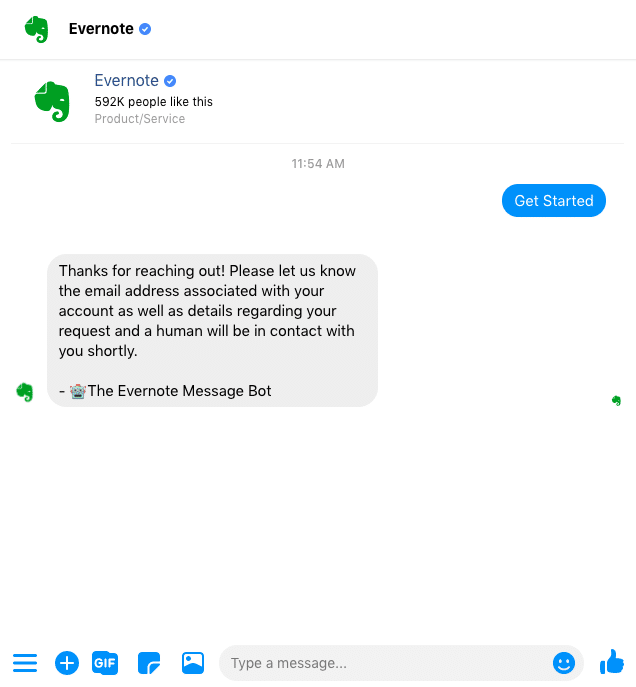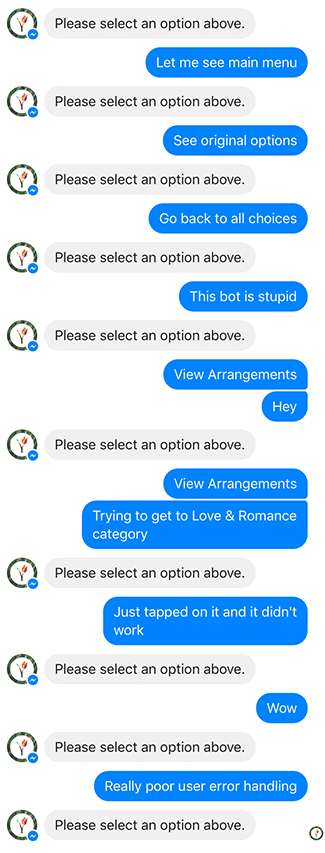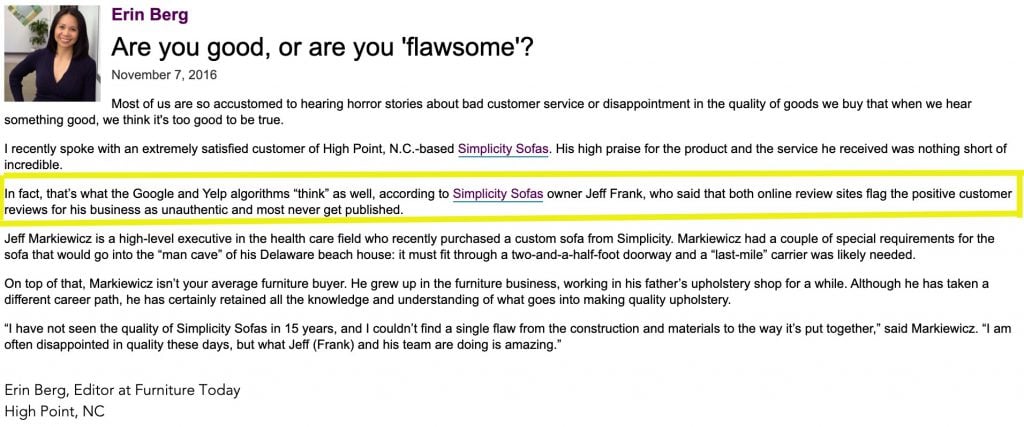It’s funny to imagine how our great-grandkids might look back at 2020 and say, “Wow, coronavirus pushed our past generations to go fully digital? A microscopic bug did that?”
And it’s true. An invisible virus single-handedly (though unwantedly) has pulled off what the biggest technology companies have been struggling with for many years.
The world was already headed towards a digital future before we found ourselves in the COVID-19 situation. But within a few months, its spread has forced almost everything offline to “mutate” to online—ranging from customer service to retail selling and education to fitness.
But what does this mean for small businesses? Two things:
- We’re at a point of no return in the journey towards a digital future.
- Technology is the biggest leveler. If you can leverage digital, you win.
If your business has shied away from adopting digital solutions so far, this is the time to wake up and start stirring your Dalgona coffee.
It’s time for you to be aware of the new possibilities in the digital world. And that includes making your online customer service world-class.
In this post, we’ll cover:
- What is online customer service?
- Why is online customer service important?
- 5 online customer service best practices
- 3 examples of how companies are providing online customer service
⭐️⭐️⭐️⭐️⭐️ Ready to offer 5-star customer service? Get strategies for every stage of the customer journey with this free eBook.
What is online customer service?
Online customer service is a way to solve your customers’ problems over chat, instant messaging, email, or social media.
And the shift to digital is happening. Fast. Do you know whether your customers would rather email or phone you after they’ve bought something from you?
Customers use these channels not because brands are present there, but because they spend a lot of their time on those platforms.
Just put yourself in the customers’ shoes. What would you do if the portable blender you ordered online arrives in your mail broken into pieces?
If you’re anything like the rest of us, you’d most likely go to that store’s website to raise a complaint—or unlock your smartphone and call customer service right away.
Online customer service saves the buyer the hassle of second-guessing how to contact a brand. Customers can casually pull out their smartphones and reach out to a business either through email, phone, chat, or Twitter—whatever is most convenient to them at that moment.
Why is online customer service important?
Putting off offering online customer service is like saying you’re happy riding your grandfather’s horse and buggy when everyone else in your town is excited about self-driving cars.
Or worse, not being there to support your customers online is like offering your customers a ride in the horse-drawn carriage on the Autobahn. It’s outdated—and sometimes, downright dangerous.
Online customer support is fast and easy, and you can actually automate customer service to a large extent. It saves you money and makes your customer service more accessible to customers.
And most importantly, the online world is where almost all your customers live these days. The majority of your customers today are digital nomads. They won’t know how to approach their problems if you unplug them from the internet.
Oh, and many of them expect instant gratification too. When they face a problem with your brand, they want online support within easy reach. Preferably, no farther than their smartphones.
If you don’t respond quickly with a solution, your customer just might switch to a different brand.
From a business perspective, online customer service is a gift that keeps on giving. It improves your agents’ productivity and customer retention, among other benefits.
For small businesses especially, improving online customer service means less hassles on the staffing front. Unlike your rich rivals in the Silicon Valley, you probably can’t afford to set up a 50-person customer service team.
But because technology is great at levelling the playing field, you can now delegate most of the repetitive customer service processes to automation or bots who work round the clock.
Not to mention the time this frees up for human agents who can now focus their efforts on offering high-touch, personalized service experience when it matters.
Having a good contact center software will really help you supercharge your online customer service. It can log all your customer conversations across social media and phone call data—and more importantly, gather it all in one place to make your customer service team’s lives easier.
Since online customer service is digital in nature, taking things online also helps you create a kind learning environment2 that lets your team move quickly towards your goals.
For example, let’s say you’ve decided to start offering prompt customer service through videos. Because it’s online, you can set up and test your new processes quickly and improve your services directly based on the test results.
If you’re intrigued by (but still not clear about) the concept of a kind learning environment, hang on to that thought. We’ll look at a few examples of online customer service that’ll help you understand it better.
5 online customer service best practices
If we had to give you the gist of the online customer service tips that you’re about to read below, it mainly boils down to two things—smooth communication and collaboration.
But there are nuances to offering wholesome customer service online. Let’s take a look at each of them.
1. Make your online support accessible
Please don’t make online customer support some sort of Easter egg treasure hunt.
If you have a website, your customers should be able to contact you through one of the many channels—live chat, email, phone, or social media. And they should be able to do so quickly, usually within a couple of minutes.
You might think this is a no-brainer, but you’d be surprised to know how many companies still operate with the traditional mindset of operating their customer service from 9 to 5.

We’re not saying that all businesses should start hiring customer service reps in bulk to offer 24/7 support.
But there definitely are smarter, scalable ways of doing this. For instance, you can program a chatbot in your customer care chat widget to handle customer queries during your non-business hours.
When customers call into your support center, you can route them through your IVR (or interactive voice response) to a rep with the right skills to resolve that particular issue. If you have an online customer service system set up, you could lighten the load on your team and use the IVR as a way of deflecting all the customer questions you’re getting.
Customers aren’t always looking for quick solutions; sometimes, they want the right solution even if it means they have to wait. But it’s always gratifying for customers to have their queries acknowledged as soon as possible, even when it comes from a chatbot:

2. Offer an omni-digital experience
Don’t we all know that person we’ve met several times at parties who either keeps forgetting your name or where they met you last time?
When that happens in customer service, it’s insulting.
And it’s a scenario bound to happen when you’re grappling to support your customers across all channels.
A customer sends you an email to process a refund request. The request gets buried in a heap of emails because Jack from customer support went on sick leave. A few days later, the customer calls but never gets to talk to someone.
And two weeks later, here they are again, demanding a follow-up publicly on Twitter. In an angry, all caps tone. With the turd emoji.
You don’t want to be that brand.
You can avoid this disjointed customer experience by having an omni-digital engagement strategy. This way, you can interact with customers on their channel of choice—while still being present everywhere.

3. Pay attention to your agent’s productivity
Online customer support is great because it’s a win-win for both your brand and your customers.
The traditional way of customer support is fragmented because it lacks the seamless flow of customer data from one tool to another or across multiple support channels.
But the problem isn’t with the available channels of support. The problem is you don’t have a common thread to tie all the channels (and your support team) together.
And this is frustrating for not only your customers, but also your support agents (especially if you have a remote support team). Our research shows that 56% of employees find toggling between communication apps cause them to let their customers down.
24 Hours Tees, a fast-growing, 10-member shirt design company faced a similar situation a few years back.
Although small, the company has a distributed team of staff from Mexico to Palestine, including customer service reps. As their order volume grew, they struggled to keep up their internal communication as well as the time to respond to customers.
When they found RingCentral, things changed overnight. They used RingCentral’s automation to improve employee communication and shorten their customer response time.
This has helped the boutique brand maintain its fun-loving interaction with customers while saving them time and money.
4. Make sure machine-to-agent handoff is smooth
It’s tempting to automate all your customer support responses once you see how powerful it is.
But be careful what you wish for, because over-automating boilerplate responses may make your brand look like an unresponsive vending machine. Or a broken tape recorder.
-

[Source]
Automation is an enabler of efficiency, but you can’t rely on it entirely to run a critical function like customer service, because almost all customers expect some level of human touch.
The solution? Find a sweet spot of collaboration between machines and humans. When your agents are offline, let intelligent automation run its course with canned responses or templated email replies.
If there’s a complicated or urgent customer requirement that demands human judgment, make sure the automation hands it off to a human agent seamlessly.
The same formula applies to other channels of online support like email, social media, and even phone. Sequence the machines to the frontline to acknowledge customers as soon as possible—and in a meaningful way.
But have your agents ready to take on more serious matters into their own hands. Use a central engagement suite that monitors all your support channels such as customer support chat or social media mentions to notify your agents.
5. Offer self-service customer service
Just like smart automation, offering self-service content can help you make your brand’s customer service self-sufficient to a large extent.
How-to blogs, frequently asked questions (FAQs), product documentation, video tutorials, online courses, or knowledge base articles are some examples of self-service content.
With self-service, you don’t even have to be there to face the customers. Self-service customer service is great because it’s inbound, everlasting, and scalable.
A lot of customers these days don’t like to be spoon-fed solutions to their problems. They want to find answers to their queries at their own convenience. They prefer a choose-your-own-adventure style of customer experience.
Imagine the time and effort your agents can save when you document the most commonly asked customer questions in your FAQs. And since FAQs are usually right there on the website footer, customers can easily locate answers to their questions—such as the refund policy, shipping queries, or cancellation of a subscription—without even having to call your customer support.
In many respects, self-service is more efficient than automation. It’s available 24/7, 365 days a year, and extremely low cost. And if you do it well, you can also leverage your self-service content to improve organic marketing reach by making them search engine optimized.
3 examples of online customer service
In the examples below, notice how each brand built good customer relations simply by making its online customer service fast, easy, and accessible.
1. Simplicity Sofas
You might want to grab a seat to hear this story. Or maybe you’ll decide to buy a sofa after reading this.
It starts in 2006 when owner Jeff Frank swoops into the online market of high-end furniture by starting Simplicity Sofas from High Point, NC—home of the world’s largest home furniture trade show.
As a direct-to-consumer online business, Simplicity Sofas puts a lot of its efforts into delighting their customers. It’s as if they have modeled their online customer service after their products: simple, reliable, and pleasant.
After each delivery, they follow up with an email or a phone call to make sure every aspect of a customer’s buying experience was beyond satisfactory. If a customer calls and Simplicity Sofas don’t have answers to their problems, they reply promptly with a promise to provide a timely solution3.
Unlike most online furniture stores where brand-to-customer interactions are rare (unless there’s a problem with payment or delivery), the folks at Simplicity Sofas surprise customers by proactively calling them within 1–6 hours after they place an online order.
And that has made all the difference to Simplicity Sofas.
In 2012, Simplicity Sofas bagged a grand prize of $20,000 for being America’s Most Innovative Small Business in a nationwide competition. They also clocked $4 million in sales that same year.
-

[Source]
Simplicity Sofas offers the kind of online customer service that sits well with everyone.
2. Stratejm
What would you do if your small business could save up to $75,000 every year—just by choosing the right customer service software?
Maybe you’ll give your staff a fat bonus, take them to Napa for a company retreat, or fill up a critical hiring position.
And if your company size is less than 30 people, it’s savings you can’t afford to lose.
Stratejm, Canada’s first cybersecurity as a service platform, did just that when they realized that simplicity in customer service is the answer to their technical product offering.
From their early days, the 24-member Stratejm team was sure about offering exceptional customer service.
They knew that their customers were tech-savvy cybersecurity professionals who lived and breathed online. They also came to know that most customers preferred talking to Stratejm’s customer service over video instead of phone calls.
After all, it’s much easier to talk about things like “the number of active exploits” and “trending vulnerabilities” visually rather than through text or audio.
When they started looking for a fitting solution, Stratejm found that buying a legacy all-in-one customer service tool could cost them an upward of $75,000 a year. (Plus, it’d be a high-maintenance job to keep it running.)
So they did some digging around and chose RingCentral, which allowed Stratejm customers to contact the business through a channel of their choice—video, chat, text, voice, or email:
RingCentral’s integration with major software apps like ServiceNow and Microsoft 365 made it fit like a glove to Stratejm’s requirements. Talk about machine-to-machine camaraderie.
This enabled Stratejm’s service reps to have single-screen visibility of all customer details and offer them quick online solutions.
Sure, the company saved a huge chunk of change. But for their customers, this kind of quick and easy customer service was priceless.
🕹️ Get a hands-on look at how RingCentral works by booking a product tour:
3. First Direct Bank
First Direct’s reputation for excellent customer service shows that customer service has a compounding effect.
It’s rare for a bank to be mentioned in the same sentence with brands such as Apple, Virgin, or Zappos. Not for First Direct, though.
The UK-based bank has found their pot of gold in the form of outstanding industry awards they get every year.
What could be the secret behind their success? The speed, ease, and consistency with which they handle their operations—including their world-class customer service.
Since its inception in 1989, First Direct set out to do things differently. At an era when banks were known to open late, close for lunch, or even close early, First Direct offered its services online 24 hours a day, 7 days a week, and 365 days a year (including holidays and weekends).
First Direct also banks heavily on online data and customer experience analytics to deliver exceptional, bespoke experiences. On an average day, a customer calling the bank doesn’t have to wait more than 20 seconds to talk to a customer service representative.
The bank was also very quick to launch a coronavirus help and guidance initiative to make it easy for its customers to get the support they want.
And remember the kind learning environment we discussed earlier? First Direct created that by launching Talking Point—an initiative to publicly talk to its customers to gather feedback from them directly.
A few years later, they also introduced an online hub called “First Direct Live” to aggregate positive and negative comments from across all social media channels to improve their shortcomings.
-

[Source]
With these two initiatives, First Bank created a feedback loop they could act on immediately. It’s fair to say that First Direct put money where their mouth is.
Future-proof online customer service
As the ongoing pandemic is pushing more businesses to adopt a digital route, we are witnessing a watershed moment in history. Businesses have no choice but to embrace a digital-friendly future.
Most customers have already abandoned their old buying habits and migrated to the digital landscape. While businesses are indeed following suit, many others are missing out on the early-adopter advantage of meeting customers where it matters.
Here’s our parting tip to you—make your online customer service support omni-digital and future-ready so that you can meet your customer expectations ready to go.
1 blog.hubspot.com/service/customer-service-statistics
3 customerbliss.com/why-simplicity-sofas-is-a-beloved-company
Originally published Mar 16, 2020, updated Jul 01, 2022






